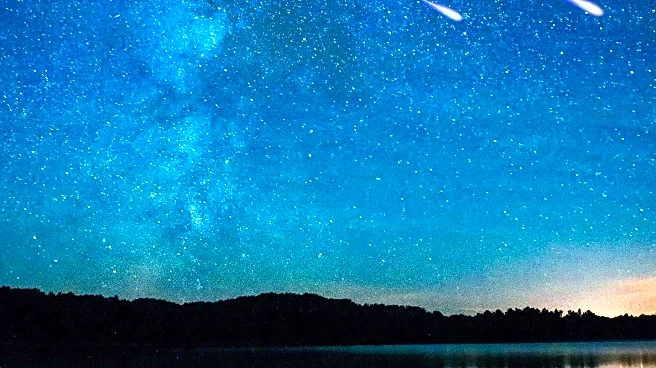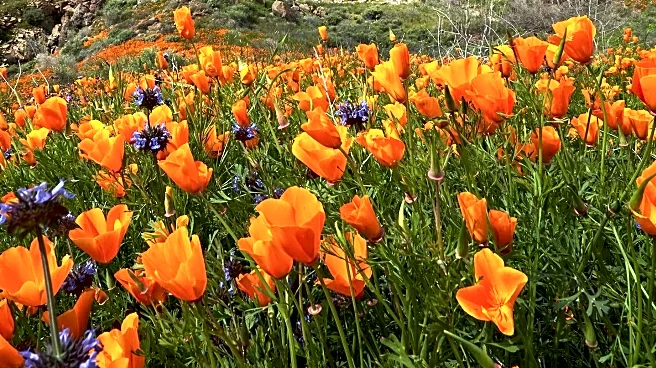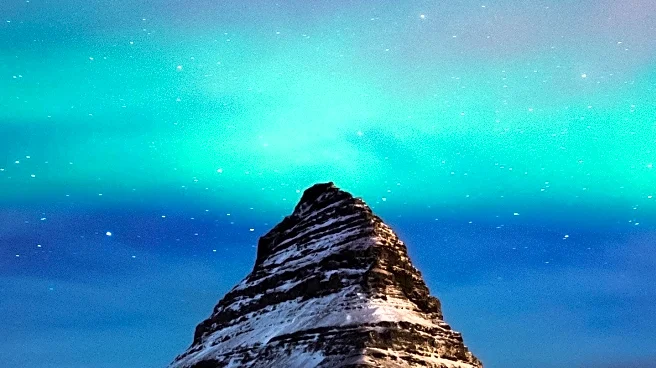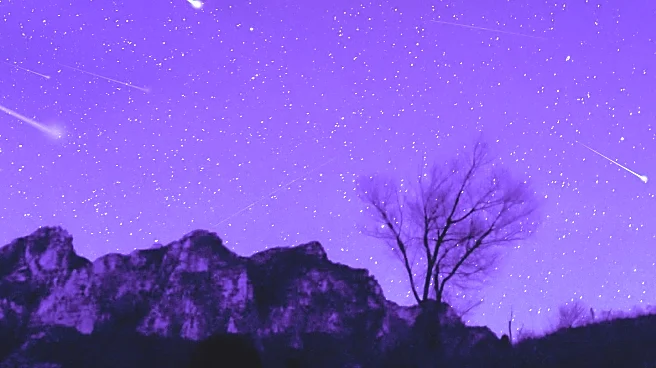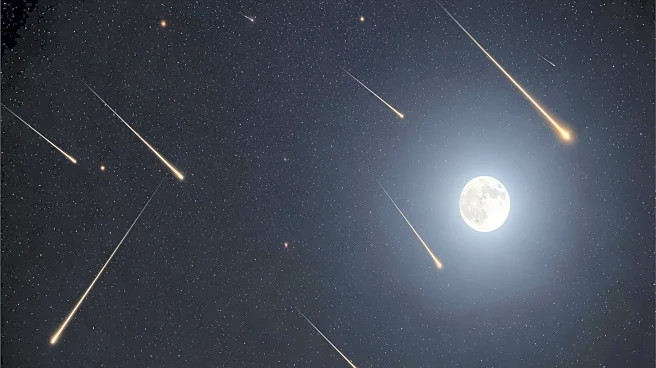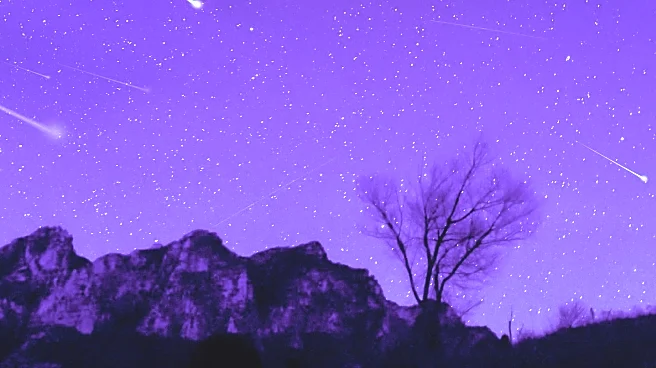What's Happening?
On November 6, 2025, a nearly full supermoon, known as the Beaver Moon, will rise in the east, appearing close to the constellation Taurus and the stars of the Pleiades open cluster. This supermoon will be the largest
of 2025, appearing 10% closer to Earth, making it slightly larger and brighter. The moon will be 94% lit and positioned roughly halfway up the western sky in the hours before sunrise, with the Pleiades appearing as a hazy patch of light 5 degrees to its upper left. Stargazers are encouraged to use binoculars to view the seven brightest stars of the Pleiades, known as the 'Seven Sisters'.
Why It's Important?
The event offers a unique opportunity for stargazers and astronomy enthusiasts to witness a rare celestial alignment. The proximity of the supermoon to the Pleiades enhances the visual spectacle, providing a chance to observe the night sky's beauty and complexity. This event underscores the importance of astronomical phenomena in inspiring public interest in science and space exploration. It also highlights the role of amateur astronomy in fostering community engagement and education about the universe.
What's Next?
Stargazers are advised to prepare for the event by securing binoculars or telescopes to enhance their viewing experience. Astronomy clubs and enthusiasts may organize viewing parties to share the experience and educate participants about the significance of such celestial events. The event may also inspire further interest in upcoming astronomical occurrences, encouraging more people to explore the night sky.
Beyond the Headlines
The supermoon and Pleiades event may spark discussions about the cultural and historical significance of celestial bodies. The Pleiades, known as the 'Seven Sisters', have been referenced in various mythologies and cultural narratives, offering a chance to explore the intersection of science and culture. Additionally, the event may prompt conversations about the importance of preserving dark skies and reducing light pollution to ensure future generations can enjoy such astronomical phenomena.



